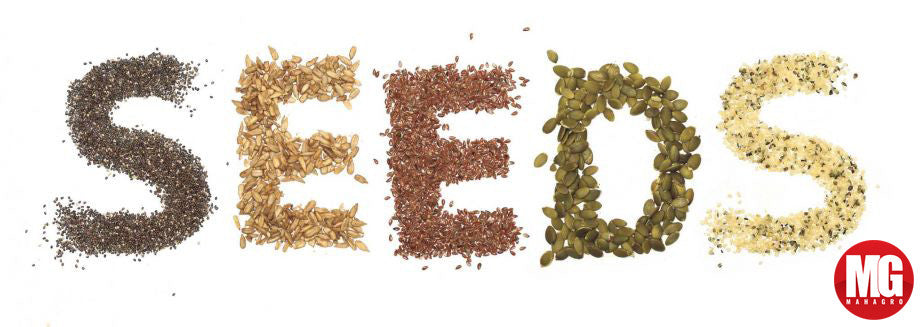
The purpose of any seed treatment is to improve seed performance in one or more of the following ways:
1. Eradicate seed borne pathogens or protect from soil borne pathogens
2. Optimize ease of handling and accuracy of planting (reduce gaps in stand or the need for thinning of seedlings, particularly when mechanical planters are used), and
3. Improve germination rates. In conventional production, seed is often treated with chemical fungicides which reduce seed and seedling losses due to seedborne and soilborne disease. Most seed protectants are not an option for organic growers; however, there are some seed treatments, such as priming, pelletizing, and the use of hot water or NOP-compliant protectants, that can be used by organic farmers to improve seed performance.
Certain crops are better candidates for seed treatment due to the nature of the seed (small or irregularly shaped) or the intended production regime. For example, pelleted seed is useful in head lettuce production because of the need for precision seeding, but is less advantageous for thick sowings of looseleaf lettuce in bed production.

Priming
Primed seed has absorbed just enough water to dissolve germination inhibitors and activate the early stages of germination. Primed seed is therefore in a suspended state of growth, so it germinates faster and more uniformly over a broader temperature range, reducing the likelihood of very thick or thin plant stands. Priming results in earlier seedling establishment, which can aid in fending of the attack of damping-off pathogens to which germinating seedlings are particularly vulnerable. Priming is usually performed in conjunction with a pelleting process to protect the primed seed, which has a shortened life expectancy.
Pelleting
A seed pellet is a coating, usually of clay mixed with other inerts, that streamlines the size, shape, and uniformity of a small, non-round seed such as those of lettuce, carrots, onions, and many herbs and flowers. Pelleting results in easier, safer, and more accurate mechanical seeding, thus reducing gaps in the field and the need for labor-intensive thinning. Ideally, the pelleting materials are somewhat permeable to oxygen and absorb water quickly so that the pellet splits immediately upon hydration. Conventional pelleting techniques using synthetic inert materials are not approved for organic use, but there are now several pelleting materials on the market that are approved for use on organic farms.
Seed Health Treatments
This is a broad category of treatments that includes hot water, biological and plant extracts, bleach disinfection, and biologicals (microbes). These treatments can improve seed and seedling health by eradicating seedborne pathogens from the seed or protecting germinating seeds from attack by soilborne pathogens.
Hot water treatment
The use of hot water treatment to eradicate seedborne diseases, particularly those caused by plant pathogenic bacteria, is well-established. While the technique does not work for large-seeded vegetable crops, it has proven effective for brassicas, carrots, tomatoes, and peppers, and, to a lesser degree, celery, lettuce, and spinach. The typical procedure consists of: 1) warming the seed in 37C water, 2) heating the seed for 20-25 minutes, depending on the crop species, in a 51°C water bath, 3) cooling the seed for 5 minutes in cold water, and 4) rapid drying. Precision in temperature and timing are important, as the seed embryo may be killed in hotter water or the disease incompletely eradicated in cooler water.

| Crop | Temperature | Time | Notes |
| broccoli | 50 C | 20 min | |
| kale | 50 C | 20 min | |
| mustards | 50 C | 20 min | |
| collards | 50 C | 20 min | |
| turnip | 150 C | 20 min | |
| cabbage | 50 C | 25 min | |
| cauliflower | 50 C | 20 min | |
| Brussels sprouts | 50 C | 25 min | |
| pepper | 50 C | 25 min | pepper may be more sensitive than tomato to hot water |
| tomato | 50 C | 25 min | can also try 50 C for 20 min |
| eggplant | 50 C | 25 min | |
| carrot | 50 C | 20 min | |
| celery | 50 C | 30 min | |
| lettuce | 47 C | 30 min | lettuce is more sensitive; try small sample first and test viability |
Hot water treatment can cause a reduction in vigor over time, so hot water treated seed should not be kept for longer than a season. The procedure is described in detail in resources cited below. Some companies do their own hot water treatment or will custom hot water treatment upon grower request. If a lot is not treated by the company and no testing has been done for pathogen detection, growers may conduct their own hot water treatment with a home set-up. It should be noted that the company’s liabilities are null and void if the grower treats the seed him/herself. Only fresh seed of high vigor should be subjected to hot water treatment, as old seed or seed of low vigor may respond poorly to the stress of the treatment and have reduced viability. Hot water treated seed should be used within one season; the storage life of the seed may be reduced by the treatment.

Plant extracts and oils
Evaluating plant extracts and oils as seed treatments is a new research area so there is currently little data on their efficacy. However, plant oils such as thyme, cinnamon, clove, lemongrass, oregano, savory, and garlic show some potential to suppress damping-off, and thyme oil is in use in Europe as a seed treatment. Pure soybean or mineral oils have been shown to reduce storage molds of maize and soybean. Further research on the disease suppressible potential of these oils is necessary to determine the viability of essential oil-based seed treatment protocols.
Bleach disinfection
Bleach (sodium hypochlorite) can be used to surface-disinfect seeds as an alternative to hot water. Bleach will eliminate pathogens on the seed surface but will not eliminate pathogens beneath the seed coat. Sodium hypochlorite is allowed for use on organic farms to disinfect wash water, provided that the levels not exceed the maximum residual contamination levels of the Safe Drinking Water Act, which currently is 4 ppm expressed as chlorine.

Biological seed treatments
Biological seed treatments, alone or in conjunction with priming and pelleting processes, may have potential in some situations for improving seedling health.


